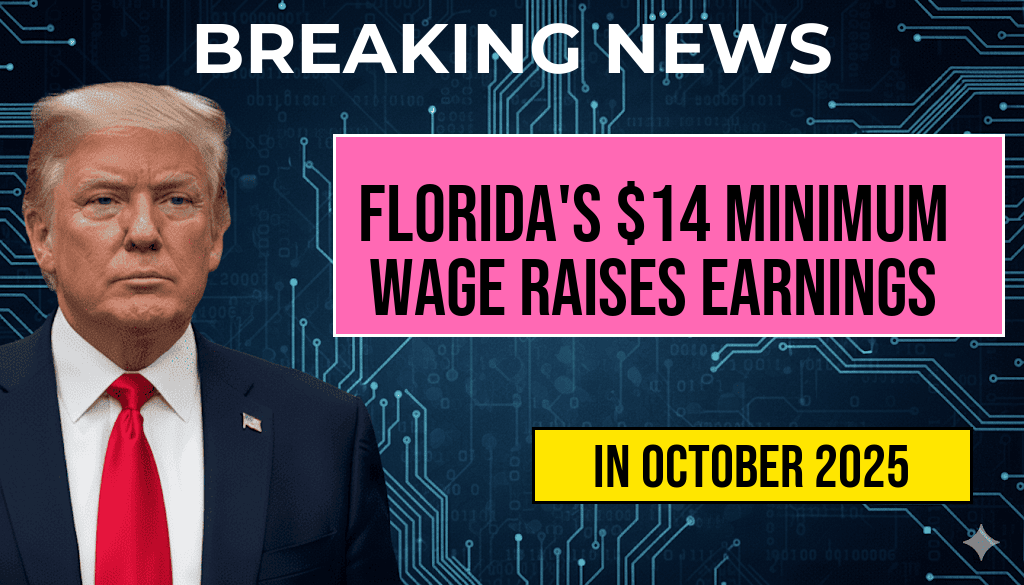Florida’s recent increase in the minimum wage to $14 an hour marks a significant shift for the state’s workforce, impacting thousands of full-time employees across various sectors. Effective January 1, 2024, this adjustment is projected to raise the annual earnings of full-time workers by approximately $2,080, based on a standard 40-hour workweek. The move reflects Florida’s ongoing efforts to align wages with the rising cost of living and bolster economic stability for lower-income households. Economists and labor advocates see this as a step toward reducing income inequality, while critics express concerns about potential inflationary pressures and business costs. As Florida embraces this new wage standard, the implications extend beyond individual paychecks, influencing employment trends, consumer spending, and the broader economic landscape.
Details of Florida’s Minimum Wage Increase
Background and Legislation
Florida’s minimum wage has been gradually increasing over the past several years, with voter-approved measures and legislative actions guiding the pace of change. The latest hike to $14 an hour comes after a series of incremental increases that began with a $10 minimum in 2022. The state’s minimum wage is now among the highest in the southeastern United States, reflecting a broader trend toward improving wages for low-income workers.
Impact on Full-Time Workers
For full-time employees working 40 hours per week, the wage increase results in a gross annual income boost from approximately $29,120 to $31,200. This translates into an additional $2,080 annually, which can significantly improve household budgets, especially in urban centers and regions with high living costs. The table below illustrates the annual earnings before and after the increase:
| Wage Rate | Annual Earnings |
|---|---|
| $13.50 | $28,080 |
| $14.00 | $29,120 |
| $14.00 (new rate) | $31,200 |
Economic and Social Implications
Potential Benefits
- Increased Purchasing Power: With higher wages, workers can afford better housing, healthcare, and education, potentially reducing reliance on social safety net programs.
- Boost to Local Economies: More disposable income often leads to increased spending in retail, dining, and service sectors, creating additional jobs and economic activity.
- Reduction in Income Inequality: Raising the minimum wage narrows income gaps, contributing to a more equitable society.
Concerns and Criticisms
- Business Costs: Small businesses and sectors with tight profit margins may face increased operational expenses, possibly leading to layoffs or reduced hiring.
- Inflationary Risks: Employers might pass wage increases onto consumers, fueling inflation in certain markets.
- Employment Effects: Some studies suggest that significant wage hikes could lead to a slowdown in job growth or shifts in employment patterns.
Broader Context and Future Outlook
Florida’s wage increase aligns with a nationwide push toward living wages, as many states and cities reevaluate minimum standards. The state’s move could influence nearby regions considering similar adjustments, especially amid ongoing discussions about economic recovery post-pandemic. Analysts at Wikipedia note that minimum wage policies often spark debates between economic growth and income equality, emphasizing the importance of balanced approaches.
Looking ahead, policymakers will need to monitor the real-world impacts of this wage hike, including employment levels, business viability, and overall economic health. The state’s Department of Economic Opportunity is expected to release data over the coming months to gauge the effects of the new minimum wage on employment trends and consumer behavior.
Conclusion
Florida’s decision to set its minimum wage at $14 an hour signifies a notable shift toward supporting low-income workers in a region marked by rapid growth and demographic change. While the immediate benefit is clear—an extra $2,080 annually for full-time employees—the long-term consequences will depend on how businesses, workers, and policymakers navigate the evolving economic landscape. As other states evaluate their wage policies, Florida’s experience offers a valuable case study in balancing economic growth with social equity.
Frequently Asked Questions
What is the new minimum wage in Florida?
The new minimum wage in Florida has increased to $14 an hour, effective immediately.
How does the wage increase impact full-time workers’ annual earnings?
Full-time workers earning the minimum wage will see an increase of approximately $2,080 per year in their annual earnings.
When did Florida implement the new minimum wage?
The minimum wage increase to $14 an hour was implemented on [insert specific date], aligning with recent legislation.
Who benefits from the wage increase?
The full-time workers earning at or near the minimum wage will benefit the most from this wage boost, improving their financial stability.
Will the minimum wage increase annually?
Yes, the Florida minimum wage is scheduled to increase annually based on inflation and cost of living adjustments.









